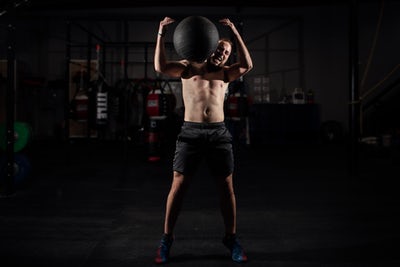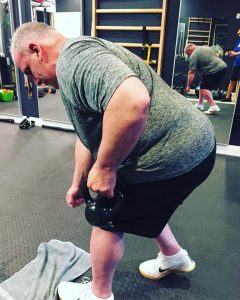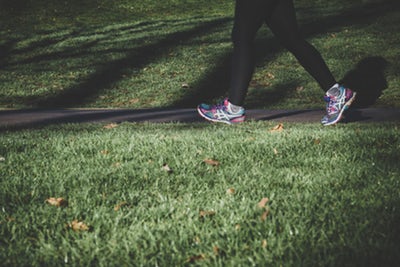Every time we think of fitness it’s hard not to think of pull ups and push ups as measures of strength. While there is some truth to that, we consider strength to reflect how well you can function in the real world. So we exercise your body the way it was designed to operate. Very seldom when you’re walking through life will you be forced to drop down and knock out 50 push ups or jump up and pull yourself up 20 times. While a push up or pull up can be useful for certain life adventures, if you’re prioritizing these movements as foundations of your workout routine then you could potentially be creating poor muscle function for walking, running, and throwing.
The human body is connected through a web of fascia that houses multiple muscles, these muscles all work in harmony to facilitate movement, specifically walking, running, and throwing. Since walking is a fundamental movement for humans, it’s important to train our body for the purpose of enhancing our gait cycle. In other words the muscle contractions that are utilized during a traditional pull up and push up don’t train the muscles to help us walk, run, or throw more efficiently. Since majority of us walk on a daily basis it would make sense to get better at this fundamental movement. In fact, during a pull up the lats pull downward towards the glutes and through repetition this trains the muscles to pull downward through day to day function. This can cause compression of the lower back muscles and lead to pain and stiffness when you’re walking, exercising, or just moving through the day.
On another note, if you’re constantly bombarding your chest with push ups because you believe it’s a more functional movement than a bench press, that’s not the case. You have to think of the function that your pecs are performing during the gait cycle. The pecs play a huge role in shoulder health, especially during throwing or punching movements, and they also work with your obliques to rotate the trunk, whether you’re walking, running, or throwing. So in the case of both, the pushup and bench press, the pecs are working through a movement that they weren’t designed to do. The lack of trunk rotation leaves the obliques out of the picture and places more strain on the shoulder because you’re isolating more of the force to the pec muscle and using the shoulder joint as a lever. Hello, joint pain. Additionally both exercises are training the pec muscles to cave the chest inward and exacerbate kyphotic posture, aka that hunched over look, like you’ve been sitting behind a computer desk all day. If your goal is to workout for enhanced function then pull ups and push ups aren’t the best option.
We have to consider what true function on a human looks like, which is the ability to primarily walk, run, and throw without pain. In order to do that, the lats and pecs have to have a reciprocal relationship, meaning if your left lat is engaging your right pec should be engaging at the same time. Our lats are meant to help rotate the ribcage and elevate the scapula to allow the ribcage to lift off of the lumbar spine, resulting in spinal decompression and enhanced trunk rotation. If we train the lats to pull downward, like during pull-ups, this leads to compression of our lumbar spine and the inability to rotate our torso. Our pecs are also meant to rotate the trunk and engage through a horizontal force rather than a vertical force transmission, like whipping us forward when we run instead of the up and down of a push up. So one of the keys to better movement is the ability to properly rotate your trunk when you move, so if your exercises don’t account for this fact then you’re limiting your functional potential in the long run.
If you observe the human gait cycle (walking, running, throwing) you will see how the legs move forward and backward as the torso rotates to counter the motion of the legs and help propel the arms back and forth. If you want to restore function to your body and have it perform well in any scenario then you should prioritize exercises that mirror the patterns of the human gait cycle. Exercises that engage the muscles the way they connect during the gait cycle will have the biggest carry over to how well you can move in life outside of the gym. Since the gait cycle is a fundamental movement, once it is wired in correctly, other movements are enhanced automatically.







